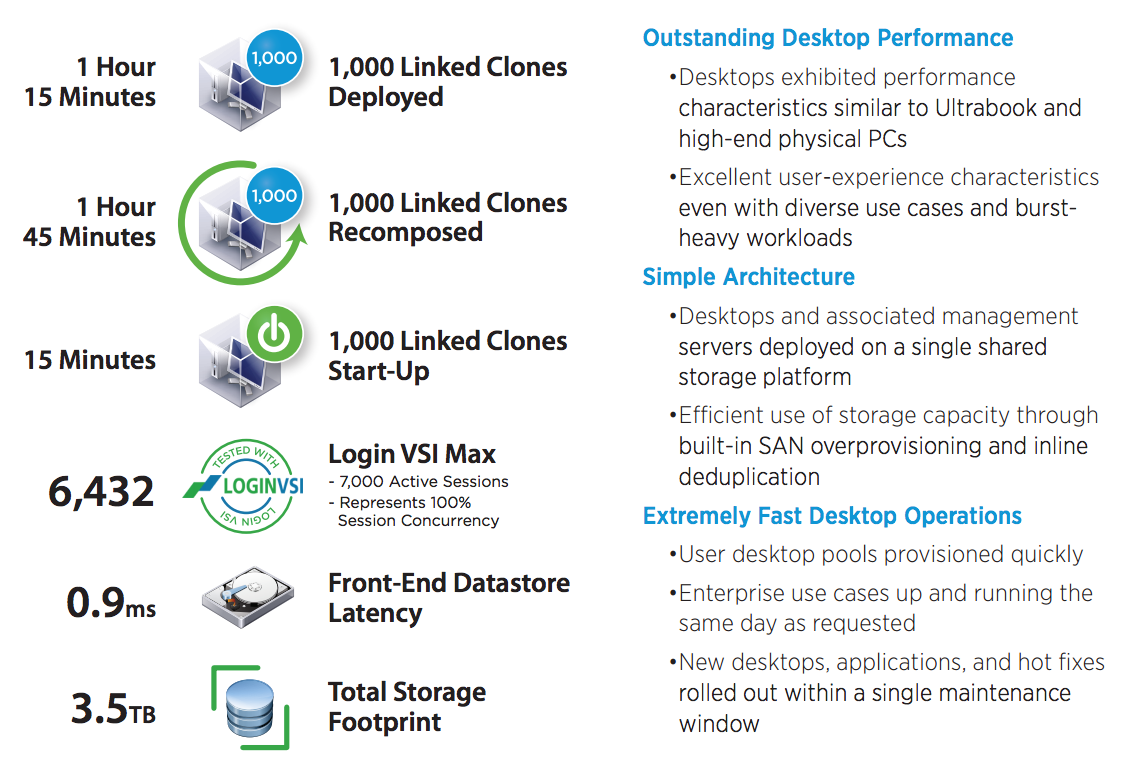Storage is the single largest impediment for the penetration of virtualization within the enterprise data center. Existing network attached, shared storage is unable to keep up with the performance requirements of virtualization because of its antiquated design based on mechanical drives. However, these storage systems do a good job satisfying the capacity and data services requirements in the data center.
The advent of flash storage holds promise for satisfying the performance requirements provided it is used appropriately. Simply adding an all flash array inside a SAN is not the right answer because it is both operationally disruptive and simply moves the bottleneck to the network. PernixData believes the correct location for flash in the data center is on the server side. However, existing solutions for leveraging server-side flash are not enterprise class.
Instead they are caching solutions that satisfy niche use cases and cause operational disruption. Because of its scale out architecture and built-in clustering capabilities PernixData FVP is able to accelerate both read and write operations while guaranteeing no data loss. PernixData FVP supports clustered hypervisor features, such as VMware vMotion and DRS, transparently and without the need for special workflows or proprietary interfaces.
Finally, PernixData FVP embeds itself inside the hypervisor transparently and with zero disruption. This means enterprises can install PernixData FVP within minutes and reap immediate return on investments. As a result PernixData FVP is the first truly seamless and enterprise class, software-defined, scale-out Performance tier that leverages server-side flash for virtualized data centers.
Quicksearch
Tuesday, October 22. 2013
Frank Denneman speaks exclusively to VMworld TV about Pernixdata
Tuesday, October 15. 2013
VMware Horizon View Large-Scale Reference Architecture
Saturday, October 12. 2013
SEsparse in VMware vSphere 5.5
The SEsparse virtual disk format was introduced in VMware vSphere® 5.1 for VMware® Horizon View environments where reclamation of storage space is critical because of the large number of tenants sharing storage.
In vSphere 5.5, for VMDKs greater than 2TB in size, SEsparse becomes the default scheme for virtual disk snapshots.
Various enhancements were made to SEsparse technology in the vSphere 5.5 release, which makes SEsparse perform mostly on par or better than VMFSsparse formats. SEsparse also has a significant advantage
over VMFSsparse virtual disk formats by being space efficient. We conducted a series of performance experiments, including a comprehensive set of Iometer workloads, real data-intensive applications like Hadoop MapReduce applications, and VDI workloads.
Overall, the performance of SEsparse is about 2x better than the VMFSsparse format for a random write workload and slightly better or on par with the VMFSsparse format for other workloads. One of the very few cases where VMFSsparse outperforms SEsparse is during sequential writes of very large block sizes like 512KB. The data generation part of the Hadoop TeraSort application issues large (512KB) sequential writes, so we have seen decreased performance in SEsparse for those cases.
Improving the sequential write performance with large I/Os is being investigated. 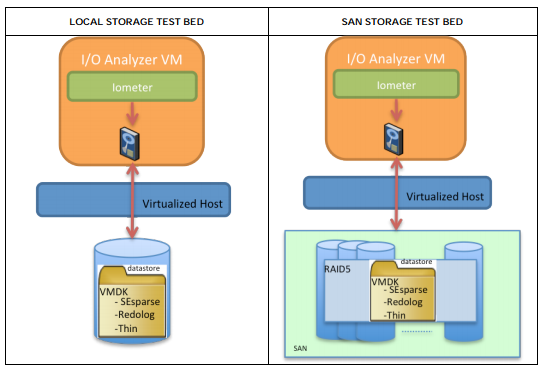
For VDI environments, however, using the SEsparse virtual disk format increases the space efficiency of VDI desktops over time with no impact on user latencies.
The space reclamation (wipe-shrink) operation in SEsparse has a 10% CPU overhead and should be scheduled during low server load. After the wipe-shrink operation completes, we observe slight improvements in user latency and CPU utilization. Overall, SEsparse is the recommended disk format for VDI workloads.
Download this technical white paper: SEsparse in VMware vSphere 5.5
Friday, October 4. 2013
New Technical White Paper - What’s New in VMware Virtual SAN (VSAN)
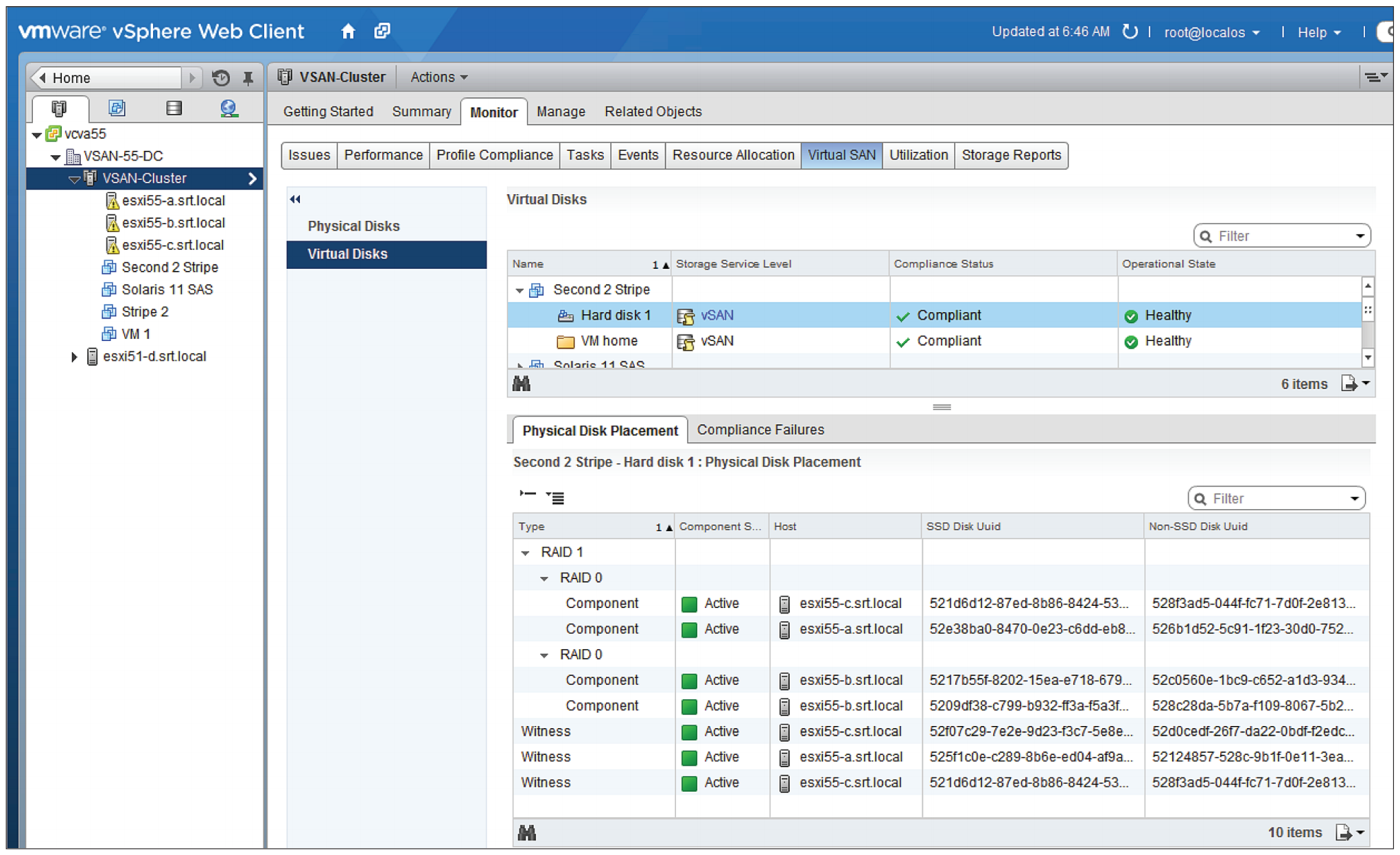
VSAN is a new storage solution from VMware that is fully integrated with vSphere. It automatically aggregates server disks in a cluster to create shared storage that can be rapidly provisioned from VMware vCenter during VM creation. It is an object-based storage system and a platform for VM Storage Policies designed to simplify virtual machine storage placement decisions for vSphere administrators.
It is fully integrated with core vSphere features such as VMware vSphere High Availability (vSphere HA), VMware vSphere Distributed Resource Scheduler (vSphere DRS) and VMware vSphere vMotion. Its goal is to provide both high availability and scale-out storage functionality.
It can also be considered in the context of quality of service (QoS) because VM Storage Policies can be created that define the level of performance and availability required on a per–virtual machine basis.
Download: What’s New in VMware Virtual SAN (VSAN)
Monday, September 30. 2013
Cool Tool - vGuestExplorer
 Manfred Meier over at VMwareDirectory has launched a new utility. The vGuestExplorer is a Windows Explorer style tool which can copy files and folders to and from Virtual Machines, even without Network connectivity.
Manfred Meier over at VMwareDirectory has launched a new utility. The vGuestExplorer is a Windows Explorer style tool which can copy files and folders to and from Virtual Machines, even without Network connectivity. It connects through PowerCLI and VIX API to the ESXi Host or vCenter Server and lists all Virtual Machines with running VMware Tools. The files are retrieved and managed by VMware Tools on the Guest Virtual Machine. It will save you time, creating and connecting ISO files or disks to Virtual Machines to transfer files.
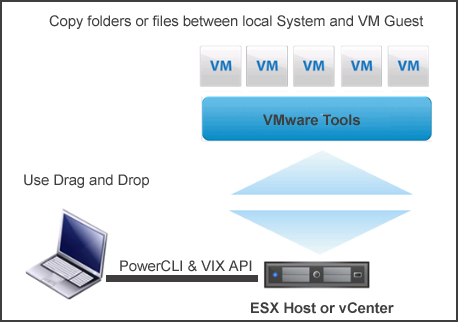
Wednesday, September 18. 2013
Now available as Rough Cut - Virtualizing and Tuning Large Scale Java Platforms
 The Rough Cuts service from VMware Press gives you exclusive access to an evolving manuscript that you can read online or download as a PDF and print. A Rough Cuts book is not fully edited or completely formatted, but you'll get access to new versions as they are created.
The Rough Cuts service from VMware Press gives you exclusive access to an evolving manuscript that you can read online or download as a PDF and print. A Rough Cuts book is not fully edited or completely formatted, but you'll get access to new versions as they are created.
Overview
Often, there's a mindshare gap” between VMware vSphere administrators and Java developers, who have fundamentally different knowledge and experience. Now, the world's leading expert in Java enterprise virtualization bridges the gap between these fields, offering both the theory and practical solutions that vSphere and Java administrators need to optimize large-scale Java-based systems.
Start Reading: Virtualizing and Tuning Large Scale Java Platforms by Emad Benjamin
Tuesday, September 17. 2013
vCloud Automation Solutions and NSX labs ready to enroll
 The VMware vCloud Automation Solutions lab will accelerate the journey to a lights-out, fully automated, and efficient Software-Defined Datacenter. You can explore vCAC, Orchestrator, PowerCLI and AutoDeploy working together to solve real-world problems.
The VMware vCloud Automation Solutions lab will accelerate the journey to a lights-out, fully automated, and efficient Software-Defined Datacenter. You can explore vCAC, Orchestrator, PowerCLI and AutoDeploy working together to solve real-world problems. A Tech Preview of the exciting new VMware NSX for vSphere product announced at VMworld. Learn how VMware NSX virtualizes your network and simplifies your datacenter. This lab is currently based on a beta version of code and you may encounter some user interface issues during the lab exercises.
A Tech Preview of the exciting new VMware NSX for vSphere product announced at VMworld. Learn how VMware NSX virtualizes your network and simplifies your datacenter. This lab is currently based on a beta version of code and you may encounter some user interface issues during the lab exercises. The lab will be improved with newer code as the product moves closer to release. For now, brave the rapids, jump in with both feet and have a go at at VMware NSX, the premier solution for Network Virtualization.
Sunday, September 15. 2013
Exclusive CloudPhysics Demo By Irfan Ahmad
In this VMworld TV video you will see an exclusive demo by CloudPhysics CTO Irfan Ahmad. CloudPhysics is uniquely positioned to solve operations management problems because of the collective intelligence it derives from analyzing the world's IT operations data, combined with its unique, patent-pending data center smart modeling and simulation techniques.
Customers use CloudPhysics to identify and troubleshoot hundreds of operational issues by accessing focused operational analytics -- referred to as "Cards" -- available on the CloudPhysics SaaS platform.
Example capabilities include:
- Health Checks - CloudPhysics acts as an early warning health service for the IT operator to identify operational hazards before they emerge by continuously checking and matching a user's environment against a live database of field issues, including firmware bugs, hardware incompatibilities and other potential problems. CloudPhysics builds the collective intelligence for health checks through its Knowledge Base Advisor, continuously gathering best practices from vendors and field knowledge from the CloudPhysics community of sys admins.
- Reporting - Admins gain insights into their VMware environments through interactive queries using CloudPhysics' Card Builder, which requires no scripting or knowledge of schemas. Users can pull pre-built reports (Cards) shared by community members or build unique ones and share with community members and colleagues.
- Analysis - CloudPhysics gives users big data-driven analytics for storage, compute and other systems to identify radical efficiency and safety improvements for VMware. Customers lower cost and risk by using results based on the CloudPhysics smart modeling techniques.
- Planning - CloudPhysics customers can simulate planned purchases or configuration changes before rolling out in production. For example, CloudPhysics predicts the latency benefit of I/O caching and determines optimal cache sizes to balance cost and performance. Customers run this analysis before making storage hardware purchases (like SSD devices) to avoid wasteful procurement while dramatically improving the performance of business-critical applications. In the case of mission-critical configuration changes common to HA applications, CloudPhysics analyzes HA configuration scenarios before customers commit them into production. Customers optimize resource settings while ensuring critical VMs are protected against server failures.
Tuesday, September 10. 2013
F5 and VMware Integration Streamlines the App Provisioning Process
Many organizations have taken advantage of the operational efficiencies that come from server virtualization. These efficiencies have reduced the time to deploy new applications from weeks to days. Until now, however, the process for provisioning the necessary infrastructure services to run those enterprise applications has remained a mostly manual and time-consuming process.
This can diminish the gains initially achieved by server virtualization and can hinder the adoption of cloud computing. The integration of F5 and VMware products helps solve these challenges. VMware NSX transforms network operations and economics in the data center by enabling neverbefore-possible service delivery speed, increasing agility, and dramatically reducing both the capital and operational costs associated with networking and security improvements.
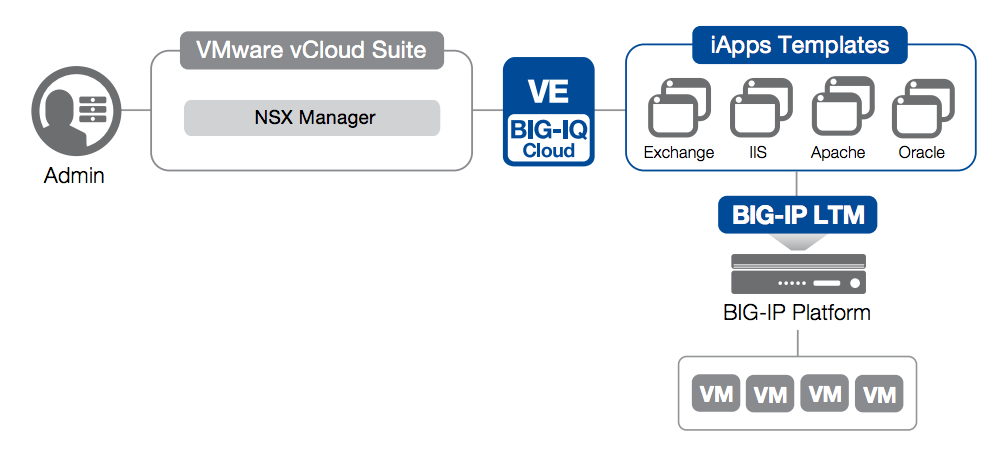
With F5® BIG-IQ™ Cloud, IT administrators can provide the full suite of services offered by BIG-IP® products—such as BIG-IP® Local Traffic Manager™ (LTM), BIG-IP Global Traffic Manager™, BIG-IP Access Policy Manager®, and others—directly from within NSX Manager as part of the normal virtual machine deployment sequence. This shortens the all-inclusive application provisioning process from days to just minutes.
Saturday, September 7. 2013
New Technical White Paper - What’s New in VMware vSphere 5.5 Platform
 VMware vSphere 5.5 introduces many new features and enhancements to further extend the core capabilities of the vSphere platform.
VMware vSphere 5.5 introduces many new features and enhancements to further extend the core capabilities of the vSphere platform. This paper will discuss features and capabilities of the vSphere platform, including vSphere ESXi Hypervisor, VMware vSphere High Availability (vSphere HA), virtual machines, VMware vCenter Server, storage networking and vSphere Big Data Extensions.
This paper is organized into the following five sections:
- vSphere ESXi Hypervisor Enhancements
- Virtual Machine Enhancements
- VMware vCenter Server Enhancements
- vSphere Storage Enhancements
- vSphere Networking Enhancements
